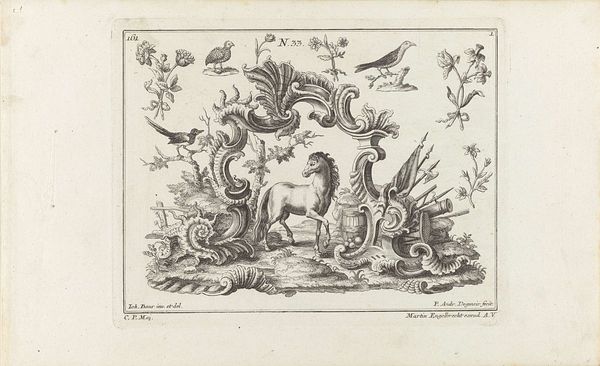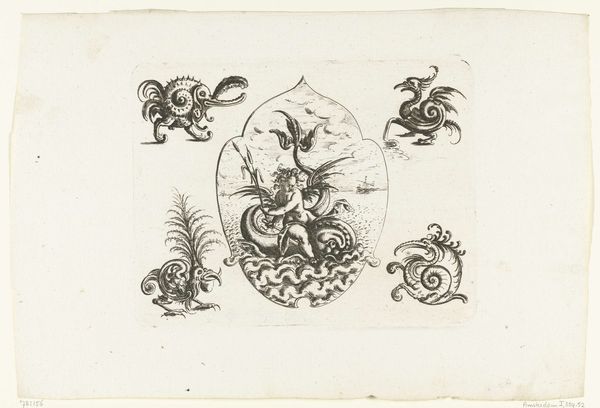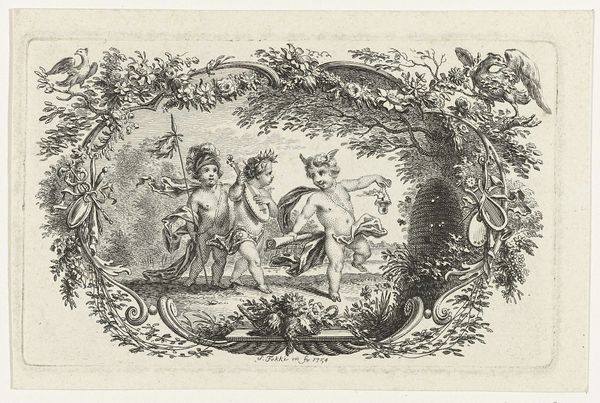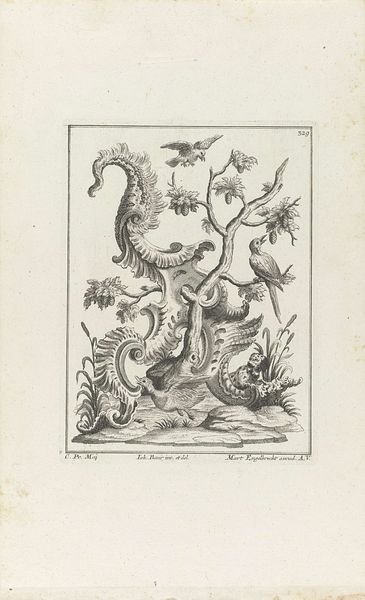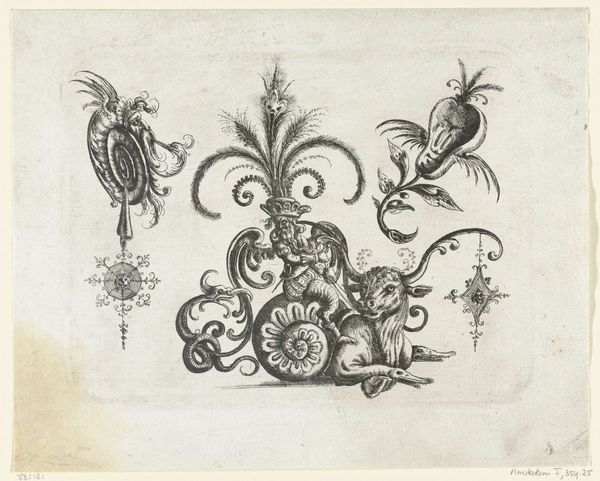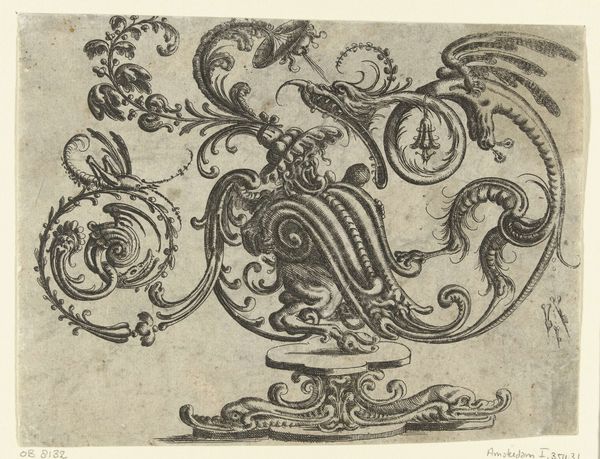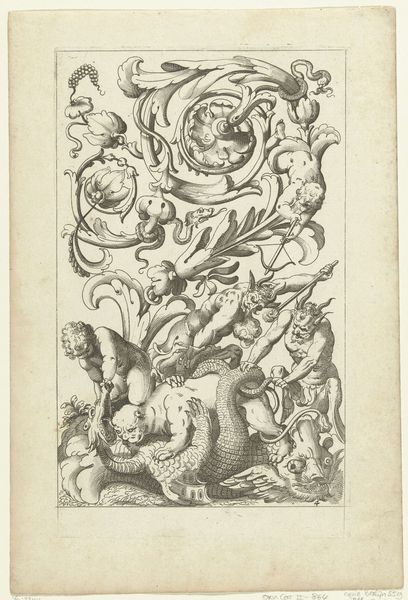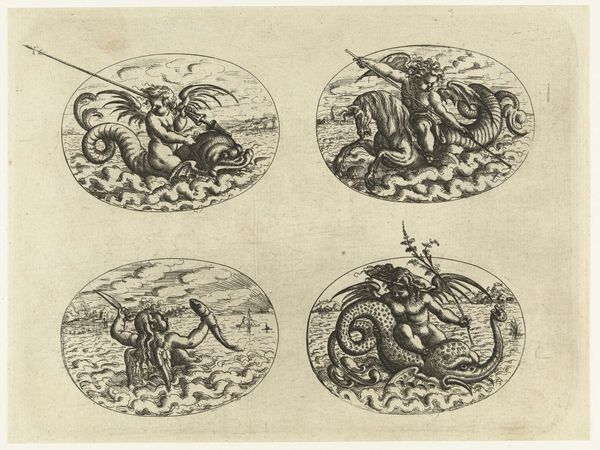
drawing, ink, engraving
#
drawing
#
allegory
#
pen drawing
#
pen sketch
#
mannerism
#
figuration
#
11_renaissance
#
ink
#
engraving
Dimensions: height 142 mm, width 184 mm
Copyright: Rijks Museum: Open Domain
This engraving features a putto, a cherubic boy, seated on a cloud. It was created by Christoph Jamnitzer in the late 16th or early 17th century. The putto, often associated with Cupid or Eros, symbolizes love, desire, and the playful innocence of youth. In classical antiquity, the putto appears in funerary art as a symbol of the soul's ascent to the heavens. Similarly, in the Renaissance, we see these figures adorning paintings, sculptures, and engravings, acting as messengers of love or divine figures. Think of Raphael's cherubs gazing down from the Sistine Madonna. Notice the putto in Jamnitzer's engraving, with a firm grip on the neck of a goose. It is an unusual and somewhat disturbing take on a symbol we typically associate with beauty and purity. This juxtaposition invites us to consider the darker undercurrents of desire. It exposes the dual nature of love as both divine and potentially destructive. The image resurfaces, evolves, and takes on new meanings in different historical contexts.
Comments
No comments
Be the first to comment and join the conversation on the ultimate creative platform.


